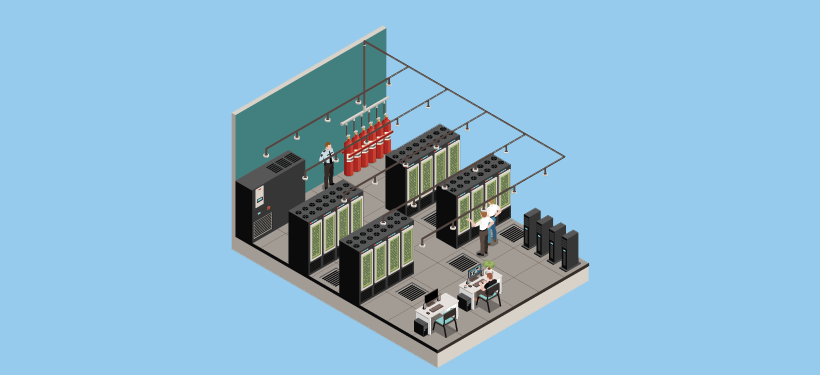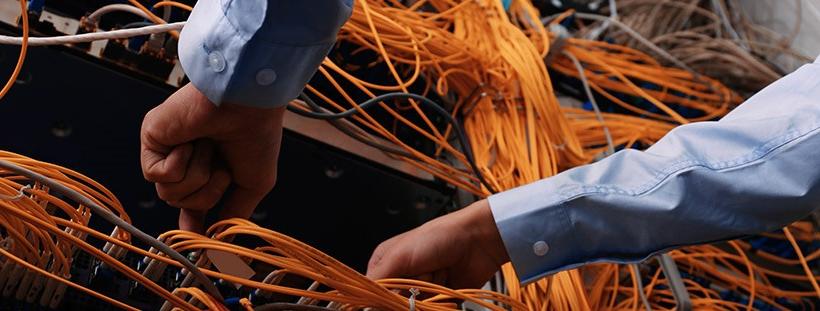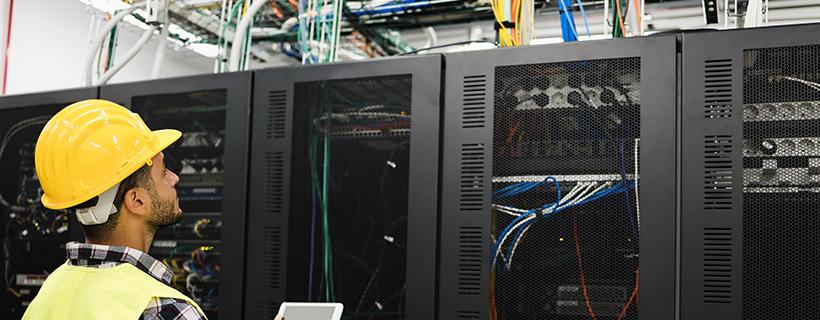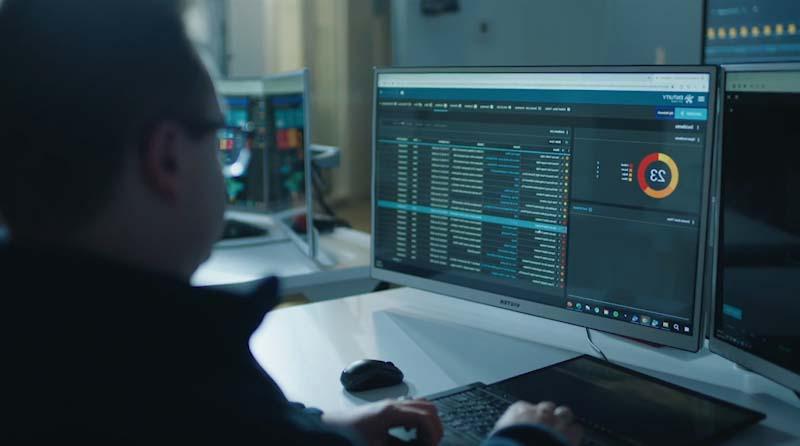6 Common Data Center Problems and Issues
Park Place Hardware Maintenance
Managing data center infrastructure can be an around-the-clock job. Your stakeholders are expecting 100% uptime, whether or not it is reasonable. Between backups, security, resource utilization, and replacements, you feel more like a firefighter than a System Admin. Establishing a plan can take the edge off the pressures of your responsibilities.
Identifying and applying data center challenges and solutions in cloud computing and on-prem operations is key to your IT success. By considering the following six common data center problems, you prepare yourself to recognize and address these issues before they impact your operations. We will first focus on the top six data center challenges, namely:
- Data Center Design
- Power Supply Failure
- Environmental Issues
- Networking and Cabling
- Security
- Management
1. Data Center Design Issues – Infrastructure and Capacity Planning
Some of the top data center challenges revolve around physical space within a data center. Whether it’s too little space, too much space, or excessive heat due to hardware proximity, poor planning for your data center physical infrastructure can have significant and lasting effects. See the failures of IT infrastructure capacity planning below, and explore how you can prevent them!
Insufficient Space for Expansion
The importance of sufficient space cannot be overstated.
- Is there room for expansion?
- Do planning regulations allow your center to expand up?
- Do the surroundings allow your data center to expand out?
A poor data center design may limit the future growth of your data center. Having to engage in a data center relocation due to unforeseen growth can have a major impact on business continuity and expenses.

Too Much Space After Equipment Refresh
When consolidating old and new servers, planners need to be aware that while new servers are smaller and have a smaller physical footprint, newer servers need significantly more power with their higher energy consumption. There are differences in the demands of virtual servers vs. physical servers that will also impact the needs of your facility.
At the same time, this significantly increases the amount of cooling systems that are required for the equipment refresh. This represents a significant challenge for the thermal footprint of the data center.
Challenges of Data Center Thermal Management
Advanced thermal controls must perform a delicate balancing act to achieve proper airflow and temperature by utilizing the available cooling options such as airflow-based, water-based, and refrigerant-based systems.
Locating a data center in a location that has free cooling from cold air and/or cold water, thus generally in the far north or the far south, may help reduce the challenges of data center thermal management. Check out what Google did in Finland in a disused paper mill to make use of water from the Baltic Sea to cool its data center.
2. Power and/or Uninterruptible Power Supply (UPS) Failure
Power failures and the failure of supposedly uninterruptible power supplies is one of the most common causes of unplanned outages. These failures typically result simply from bad planning and a lack of investment in the necessary UPS equipment.
3. Data Center Environmental Issues
Data centers and their associated servers have power requirements for both operation and thermal management. These power requirements translate into energy needs. Data centers are huge users of energy, so where can we get this energy supply?
One option is to locate a data center near an affordable source of energy. From an environmental point-of-view, renewable energy is the obvious long-term candidate. For example, a data center located near a river with significant hydropower production might be preferred to a data center located near a nuclear power station, even if, in the short-term, nuclear power might be less expensive than hydropower. Data center plans should consider the long-term environmental impact.
According to Forbes, globally, data centers now account for 1% of electricity demands and contribute 0.3% of CO2 emissions. Energy efficiency, however, is key. Data center designers need to consider overall energy consumption as well as energy efficiency. There is no sense in designing for low-cost energy only to learn that the energy consumption is minimal or, conversely, that energy is not being used efficiently. Studies show that data center capacity is typically underutilized, yet idle servers still consume energy. Any gains from low-cost energy must be used effectively and efficiently.
4. Challenges in Data Center Networking and Cabling
There are two potential challenges in data center networking. First, bandwidth: how much data can travel over a connection? Higher bandwidth means better network speed.
The other side of the coin is latency: the measurement of how long it takes for data to travel to its destination. Latency is the delay of the data, which at the macro-level is a function of distance that data must travel.

Regardless of the speed of the connection, data must travel some distance. That movement of data between locations takes time. Networking in a data center relies on speed: fiber optic cables and data traveling a short distance to avoid data center latency issues. Cables between your server, storage, and networking equipment can quickly become unruly, so having a plan in place beforehand can prevent challenges down the road.
Besides distance, network complexity is important. Network equipment is never 100% efficient as they are constantly prioritizing how packets should be routed. The shortest route might not always be available. Data may have to travel through more connections, which increases latency. In many cases, network bandwidth monitoring software can help you observe your network condition and respond accordingly.
5. Data Center Security Issues
There are several common data center security challenges, from physical security to access-related issues, such as Denial of Service (DoS). In addition, there are data-related issues, such as confidential information being stolen, data being altered, or the pure loss of data. IBM’s recent study of data breaches shows that more than half (52%) of data breaches are caused by malicious attacks, with the breakdown of root causes being:
- Compromised Credentials
- Phishing
- Cloud Misconfiguration
- Vulnerability in Third-party Software
- Physical Security Compromise
These threats, however, are no longer the costliest malicious data breaches, as of 2021. Business Email Compromise now tops the list, from an average cost point-of-view, with Phishing and Malicious Insider close behind.
6. Data Center Management Issues
The management of a data center is challenging. The highest priority is identifying and eliminating risk from the operation of the data center, with the goal of achieving high reliability of critical systems and providing high availability to customers. A key technique to address data center management issues is to take a calculated approach to Data Center Infrastructure Management (DCIM).

DCIM typically monitors, measures, manages, and controls a data center’s:
- Equipment, such as servers, storage, and network
- Infrastructure such as power distribution and cooling systems
The goal of DCIM is to allow a holistic view of a data center’s performance in terms of floor space, equipment, and power/energy, as well as analyzing the data related to these criteria. DCIM should allow facilities to determine how efficient they are operating.
Real-time Network Monitoring and Reporting
One important aspect of DCIM is to properly monitor and measure network operations. As stated previously, there are numerous challenges to be addressed in data center networking and cabling, from the bandwidth between critical systems to the latency involved in the networking. Thus, DCIM requires a real-time view of the network to ensure that proper reporting and analysis can be done to identify and fix any potential bottlenecks.
Operation-side monitoring and client-side monitoring can be a different challenge altogether. You may encounter client issues that don’t originate from within your data center, but DCIM tools won’t necessarily help you identify where the real failure is. Clients can leverage network monitoring software for more comprehensive visibility into their overall network.
Optimizing Performance
Efficient data center management means optimizing performance. For data centers, this means doing more with less, while at the same time ensuring availability, Uptime, and reliability. One key component of optimization is power usage. How effective is the data center in its total power requirement?
Performance is also about computation usage: efficiently managing workloads, and cooling efficiency. Well-optimized data centers are generally more reliable, providing an additional boost in performance as perceived by customers.
Reducing CAPEX and OPEX
Organizations that are operating their own data centers are making capital expenditure investments with associated upfront costs as well as recurring upgrade costs. A typical CapEx approach is focusing resources on non-core business of the organization. Third party IT hardware maintenance can effectively delay the need for equipment refreshes while saving 30-40% compared to OEM support contracts.
The alternatives are co-located and Cloud-based data centers with controllable operating expenses (OpEx). OpEx allows greater flexibility. Remote hands in data centers can also be used to reduce the cost of colocation ops while maintaining a reasonable level of control over your network.
In both CapEx-oriented and OpEx-oriented approaches, organizations need to optimize their usage of resources so that they are only paying for what they really need.
Overcome Persistent Data Center Challenges with the Right Partner
Comprehensive data center and networking optimization can be difficult to achieve using several different vendors. Park Place Technologies offers hardware maintenance, infrastructure managed services, network monitoring and management, and data center hardware sales from a single source!
Contact us today to learn how you can get seamless support and tackle common data center problems with a trusted partner.



